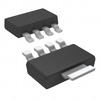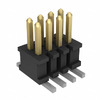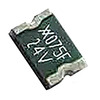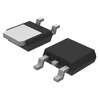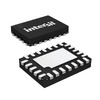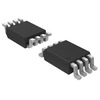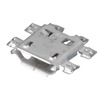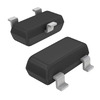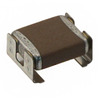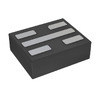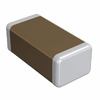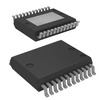Exploring the LTC2055 Amplifier: Features, Specifications, and Applications
The LTC2055 precision amplifier by Analog Devices is renowned for its ultra-low offset voltage, minimal noise, and innovative zero-drift technology, making it a top choice for applications requiring high accuracy and stability. From industrial automation to medical devices, this amplifier's advanced features ensure precise signal amplification and consistent long-term performance, even in challenging environments. This article explores the technological innovations behind the LTC2055, its practical applications, and the key reasons it outshines standard operational amplifiers in precision-driven tasks.Catalog
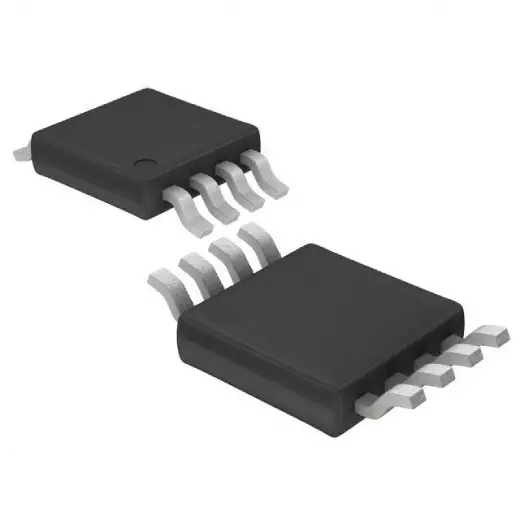
Understanding LTC2055 Amplifier
Analog Devices' LTC2055 precision amplifier excels with its ultra-low offset voltage and minimized noise, making it ideal for intricate measurement tasks demanding utmost accuracy. The LTC2055 amplifier employs advanced chopper-stabilized technology, which diminishes offset voltage through changes in time and temperature. This ensures stable and precise signal amplification, useful in environments requiring high precision. Its architecture incorporates a zero-drift mechanism for consistent long-term performance, enabling lasting stability and dependability.
In industrial settings low noise and stability are dominant for maintaining smooth operations, used for accurate data capturing. The reliability of systems is fortified, enhancing overall performance. For medical instrumentation, accurate signal amplification is requisite for trustworthy diagnoses, directly impacting patient care. During environmental monitoring the LTC2055 maintains consistent performance against fluctuating conditions, guaranteeing precise sensor readings and trustworthy data collection.
Compared to standard operational amplifiers LTC2055 offers notable benefits with its low power consumption and increased reliability. Field data across diverse industries highlight its consistent performance in extreme conditions and lengthy projects. The low offset voltage and noise specifications translate to fewer calibration needs, thus lowering maintenance costs and operational interruptions.
Overview of the LTC2055 Amplifier
The LTC2055 is a micropower, zero-drift operational amplifier planned with precision to minimize input offset voltage and reduce drift over time and temperature variations. This operational amplifier is known for its remarkable precision and stability, attributes serious for applications that demand consistent performance amid fluctuating conditions.
Supply Voltage Range and Versatility
The LTC2055 operates efficiently over a supply voltage range from 2.7V to 6V. This offers substantial flexibility for various applications, ensuring rail-to-rail input and output capabilities. Consequently, the LTC2055 can handle signals ranging from the minimum to the maximum voltage of the power supply. This feature is mostly advantageous in systems requiring maximum signal swing and optimal dynamic range.
Low Quiescent Current
One of the most striking features of the LTC2055 is its exceptionally low quiescent current, typically around 1.5µA. This low power consumption makes it highly suitable for battery-operated systems where energy efficiency is a major concern. For example, in portable medical devices, where both long battery life and consistent performance are highly valued, the LTC2055's low power characteristics contribute significantly to the device's overall effectiveness and reliability.
Input Offset Voltage and Drift
The zero-drift technology integrated into the LTC2055 severely reduces the input offset voltage (typically 3µV) and its drift over time and temperature. This level of precision is serious in applications such as high-resolution instrumentation and sensor interfaces. Minor deviations can result in substantial inaccuracies. Copier machines, for instance, rely on precise signal amplification to ensure high-quality output, benefiting greatly from this technology.
Specifications of the LTC2055 Amplifier
|
Parameter |
Specification |
|
Supply
Voltage |
2.7V
to 12.6V (±1.35V to ±6.3V) |
|
Input
Offset Voltage |
3µV
(typical) |
|
Input
Offset Voltage Drift |
0.015µV/°C
(typical) |
|
Input
Bias Current |
5pA
(typical) |
|
Input
Voltage Noise |
220nVpp
(0.1Hz to 10Hz, typical) |
|
Gain
Bandwidth Product |
3.5MHz |
|
Slew
Rate |
0.3V/µs |
|
Supply
Current |
1.2mA
(per amplifier, typical) |
|
Output
Voltage Swing |
Rail-to-Rail |
|
Common
Mode Rejection Ratio |
150dB
(typical) |
|
Power
Supply Rejection Ratio |
140dB
(typical) |
|
Operating
Temperature Range |
-40°C
to 125°C |
|
Package
Options |
MS8,
DFN (3mm x 3mm) |
Main Features of the LTC2055 Amplifier
The LTC2055 amplifier boasts several distinctive features that enhance its performance and versatility in various applications. This section explores these features, accent their practical significance, and the advanced technology that optimizes the amplifier's functionality.
•Low Offset Voltage: Offset voltage represents the unwanted differential voltage between the input terminals when the output is zero. The LTC2055 offers an impressively low offset voltage, typically around 0.5 microvolts. This ultra-low offset ensures precise signal amplification, major for applications demanding high accuracy, such as medical instrumentation and high-sensitivity sensor interfaces. Minimizing offset voltage reduces the frequency of recalibrations in precision instruments, reflecting advancements in microelectronic manufacturing and design focused on achieving unparalleled precision.
•Low Noise: Noise performance is active in amplifier quality, and the LTC2055 excels with exceptionally low noise, measured at around 2.5 nanovolts per root Hertz. This low noise level is serious in applications like audio processing and seismology, where minimizing external disturbances preserves signal integrity. Industry practices show that reducing noise enhances signal fidelity and minimizes data corruption in serious monitoring systems.
•Zero-Drift Technology: Zero-drift technology in the LTC2055 compensates for temperature-related drifts in offset voltage and bias currents, maintaining stability across wide temperature ranges. This stability eliminates the need for periodic adjustments, ensuring consistent accuracy. Zero-drift amplifiers prove invaluable in outdoor and aerospace applications, regularly subjected to fluctuating and extreme temperatures.
•Minimal Power Usage: Power consumption is a remarkable concern, especially in battery-operated and portable devices. The LTC2055 is exceptionally efficient, requiring a typical supply current of around 1 microampere. This low power usage extends the battery life of portable systems and contributes to energy savings in larger deployments. The importance of energy efficiency is evident in wearable technology and remote sensing equipment, directly translating to longer operational periods and reduced maintenance.
•Rail-to-Rail Input/Output Capability: Rail-to-rail input/output capability allows the LTC2055 to handle signals spanning the entire supply voltage range. This feature simplifies design considerations, maximizing the dynamic range and flexibility of the amplifier in various circuit configurations. Rail-to-rail performance minimizes the risk of signal clipping and distortion, fostering more robust and versatile electronic designs.
•Broad Supply Voltage Range: The LTC2055 operates over a broad supply voltage range from 2.7V to 16V, accommodating a wide array of applications. This flexibility suits both low-voltage portable devices and higher-voltage industrial systems, enabling you to integrate the amplifier into mixed-voltage environments without complex level-shifting circuits.
Functional Principle of the LTC2055 Amplifier
The LTC2055, with its zero-drift technique, attains exceptional sensitivity and stability in low-frequency applications. By continuously correcting offset through an auto-drift mechanism, it inherently enhances reliability and precision, making it suited for various operational contexts.
Auto-Zeroing Mechanism
The amplifier relies extensively on an auto-zeroing mechanism to achieve and maintain precise input offset voltage correction. This process involves alternating phases: during the sampling phase, the offset voltage is captured on internal capacitors. In the subsequent correction phase, this stored voltage is subtracted from the input signal. Comparable practices can be found in precision measurement instruments, where consistent accuracy over long durations is the main, illustrating the practical benefits of such self-correcting methodologies.
Input Phase Design
The input stage design is meticulously crafted to feature low bias current and high common-mode rejection. In applications such as biomedical signal processing and high-sensitivity electronic instruments, low-bias current minimizes signal distortion, is used for delicate tasks requiring high precision, and high common-mode rejection mitigates unwanted noise and interference, enhancing overall system performance and reliability. These attributes ensure the amplifier's accuracy and dependability across varied practical scenarios.
Chopper Stabilization Technique
The chopper stabilization technique modulates the input signal to higher frequencies, significantly reducing low-frequency noise components. This modulated signal is then demodulated back to its original frequency, effectively eliminating the pervasive 1/f noise found in conventional operational amplifiers. This technique is often utilized in systems where signal integrity is active, such as in high-fidelity audio equipment or sensitive scientific instrumentation, demonstrating its substantial role in maintaining signal clarity and accuracy.
Stable, Low Offset Voltage and Drift
Combining auto-reset and chopper stabilization mechanisms, the LTC2055 maintains extremely low input offset voltages with minimal drift over time. This feature ensures high accuracy across varying temperatures and operational conditions. Environmental monitoring systems, for example, rely on the amplifier’s stability to provide consistent data despite external temperature fluctuations. Highlight the LTC2055’s reliability and precision in actual scenarios.
High Common-Mode Rejection Ratio (CMRR)
The high Common-Mode Rejection Ratio (CMRR) greatly enhances the amplifier's precision by effectively rejecting noise and interference from common-mode signals. This characteristic is mostly advantageous in industrial and automotive applications. External noise sources are prevalent, necessitating the need for reliable performance in electrically noisy environments. Measurement accuracy is significantly improved, broadening the amplifier's applicability across diverse and challenging operating conditions.
Uses of the LTC2055 Amplifier
Data Acquisition Systems
In data acquisition systems, the LTC2055 operational amplifier offers unparalleled accuracy and stability. These attributes are useful for capturing subtle signal variations. You can have successfully implemented the LTC2055 in environmental monitoring equipment, ensuring that minute changes in temperature and humidity are detected with precision. High-precision measurement relies on the LTC2055's low-offset voltage to accurately interpret even the slightest electrical signals.
Analog Signal Conditioning
Analog signal conditioning derives remarkable benefits from the LTC2055 amplifier’s low-offset and low-noise characteristics. This is required in industrial automation systems where the LTC2055 plays a dominant role in sensor signal conditioning circuits. These systems require components that maintain signal integrity while filtering, amplifying, and converting analog signals into readable outputs.
Instrumentation Amplifiers
The LTC2055 is basic in the design of instrumentation amplifiers due to its high gain accuracy and temperature stability. In laboratory instruments like oscilloscopes and multimeters, the LTC2055 ensures consistent and error-free amplification of weak signals. This makes it an ideal choice for applications demanding high precision and reliability.
Medical Devices
Medical devices rely on precision, and the LTC2055’s minimal offset error and ability to handle very low signal levels make it suitable for biosignal amplification, such as in ECG or EEG monitoring. Its consistent performance is used for patient safety and data integrity. Medical device manufacturers use the LTC2055 in diagnostic equipment to achieve reliable results under varying conditions.
Weighing Scales
High-accuracy weighing scales benefit immensely from the LTC2055 amplifier. Its low noise and high linearity record even the slightest changes in weight accurately. In commercial and industrial weighing systems, the LTC2055 ensures precise weight measurements, useful for quality control and fiscal transactions.
Low-Level Signal Processing
Processing low-level signals without losing integrity entails using amplifiers that add minimal noise. The LTC2055 excels here, providing clear amplification of signals that might otherwise be overwhelmed by noise, making it ideal for audio preamplifiers and other applications demanding high signal fidelity.
Analog Filters
For analog filters, the LTC2055’s precision characteristics ensure accurate frequency response. It selectively amplifies or attenuates frequencies, making it perfect for active filter designs in audio equipment, communication systems, and signal processing units.
Voltage References
Voltage reference circuits depend on stable and precise components. The LTC2055’s low offset drift characteristic over temperature variations enhances the reliability of voltage references, ensuring accurate performance across consumer electronics and specialized instrumentation.
High-Precision DACs and ADCs
Digital-to-analog converters (DACs) and analog-to-digital converters (ADCs) require highly accurate operational amplifiers. The LTC2055’s low offset voltage and low noise performance improve the overall accuracy of these converters. You have successfully utilized the LTC2055 in audio equipment for high-fidelity signal conversion.
Bridge Amplification
Bridge amplifiers benefit from the LTC2055’s stability and precision. In load cells and pressure sensors, the amplifier accurately amplifies small differential voltages, used for precise measurement of physical quantities. This reliability is mostly remarkable in the aerospace and automotive industries.
Signal Isolation
Signal isolation applications benefit from the LTC2055’s stable isolation amplification. This minimizes signal distortion and maintains accuracy, basic in digital communication systems or sensitive measurement apparatus where signal integrity is required.
Noise-Cancellation Systems
Noise-cancellation systems require amplifiers that handle low-level signals while minimizing additional noise. The LTC2055’s low-noise performance makes it suitable for these systems, ensuring that unwanted noise is canceled without degrading the desired signal.
Scientific Research Equipment
In scientific research, precision instruments are the ultimate. The LTC2055’s reliability and accuracy make it preferred for equipment in fields like physics research, chemical analysis, and biotechnological experiments. Its capability to handle minute signals with high precision supports groundbreaking discoveries and innovations.
Comparison Between LTC2055, AD8628, OP07, OPA2188, and MAX40008
|
Feature |
LTC2055 |
AD8628 |
OP07 |
OPA2188 |
MAX40008 |
|
Type |
Precision Op-Amp |
Precision Op-Amp |
Precision Op-Amp |
Precision Op-Amp |
High-Speed Op-Amp |
|
Supply Voltage |
±2.5V to ±18V |
±2.5V to ±18V |
±3V to ±15V |
±2.5V to ±18V |
±1.5V to ±5.5V |
|
Input Offset Voltage |
25 µV (max) |
25 µV (max) |
50 µV (max) |
25 µV (max) |
25 µV (max) |
|
Input Bias Current |
2 pA (typ) |
10 pA (typ) |
1 nA (typ) |
0.5 pA (typ) |
0.3 pA (typ) |
|
Gain Bandwidth Product |
500 kHz (typ) |
10 MHz (typ) |
1 MHz (typ) |
10 MHz (typ) |
7 MHz (typ) |
|
Slew Rate |
0.2 V/µs (typ) |
0.5 V/µs (typ) |
0.5 V/µs (typ) |
1 V/µs (typ) |
4 V/µs (typ) |
|
Total Harmonic Distortion (THD) |
0.01% (typ) |
0.0005% (typ) |
0.01% (typ) |
0.0001% (typ) |
0.001% (typ) |
|
CMRR |
130 dB (typ) |
120 dB (typ) |
110 dB (typ) |
120 dB (typ) |
120 dB (typ) |
|
PSRR |
130 dB (typ) |
120 dB (typ) |
110 dB (typ) |
120 dB (typ) |
120 dB (typ) |
|
Noise Density |
5 nV/√Hz (typ) |
7 nV/√Hz (typ) |
15 nV/√Hz (typ) |
7 nV/√Hz (typ) |
6.5 nV/√Hz (typ) |
|
Package Options |
8-SOIC, 8-SOIC (LFCSP) |
8-SOIC, 8-DIP |
8-DIP, 8-SOIC |
8-SOIC, 8-DIP |
8-SOIC |
Detailed Analysis
•LTC2055: The LTC2055 excels when low noise and minimal offset voltage are most desired. Specifically, it features a noise figure of 2.5 nV/√Hz and an offset voltage under 1 µV. Such specifications cater well to precision measurements. The LTC2055 finds its strength in medical instrumentation and high-accuracy weigh scales, both relying on precise differential measurements. These environments often demand the utmost precision and consistency for successful outcomes.
•AD8628: The AD8628 is custom-made for high-precision signal processing. It exhibits superior total harmonic distortion (THD) of -110 dB and a gain bandwidth product of 10 MHz, which contributes to exceptional signal fidelity and dynamic range. Applications such as A/D converters and sensor signal conditioning see the AD8628 playing a dynamic role. In these applications, maintaining signal integrity can significantly enhance system performance.
•OP07: The OP07 is renowned for its stability and minimal offset voltage. Although it offers a lower bandwidth (600 kHz) compared to modern operational amplifiers, it is immensely useful in systems prioritizing stability and low drift over time. For example, it is commonly used in temperature control systems and long-term data logging setups. In these applications, its reliability and consistent performance are requisite over extended periods.
•OPA2188: Optimized for rapid and precise operations, the OPA2188 brings together low noise (5.1 nV/√Hz) and high precision. These features make it ideal for tasks requiring quick and trustworthy signal amplification. Industrial automation systems benefit significantly from the OPA2188. The op-amp's precision helps minimize errors and boosts overall system efficiency, which can be used in a fast-paced industrial environment.
•MAX40008: The MAX40008 strikes a compelling balance between bandwidth and speed, featuring a 40 MHz bandwidth. Operating at lower voltages, it fits well in low-power applications where speed is unsafe. In scenarios involving high-speed data acquisition and analysis, such as portable electronics and signal processing systems, the MAX40008's performance becomes mostly notable. The op-amp’s agility facilitates rapid data handling and efficient system operations.
LTC2055 Amplifier Advantages
Ultra-Low Offset Voltage and Drift
The LTC2055 amplifier excels with ultra-low offset voltage and minimal drift over time. This reduces the need for frequent calibration, making it highly suitable for precision applications. Specifically, in medical instrumentation and data acquisition systems, stability and accuracy over long periods are a must. For instance, electromyography (EMG) equipment, which is used to study muscle activity, relies heavily on the amplified signal's integrity for accurate diagnosis.
Low Noise
The amplifier's low noise feature guarantees signal integrity. This makes it perfect for sensitive measurements in both scientific and industrial settings. In audio recording studios, minimizing noise is the ultimate to maintain high-quality sound. Similarly, in spectroscopic analysis, lower noise levels aid in detecting faint signals, leading to more precise results and valuable insights.
Low Input Bias Current
The LTC2055's low input bias current makes it ideal for high-impedance sensor applications, including photodetectors and piezoelectric sensors. The minimal bias current ensures the sensor signal remains unaltered, preserving data accuracy. This is mostly beneficial in environmental monitoring stations, where precise measurement of trace gases or humidity levels is used.
Wide Supply Voltage Range
The LTC2055 supports a wide supply voltage range, allowing its deployment in various systems. From portable battery-powered devices to larger, stationary installations, its flexibility makes it a versatile component. In wearable health monitoring devices, for instance, it functions reliably under varying power conditions.
Rail-to-Rail Output
The rail-to-rail output enables the amplifier to deliver the full range of the supply voltage. This maximizes the signal swing and enhances dynamic range. In analog-to-digital converter (ADC) interfacing, this feature improves conversion accuracy. For example, digital voltmeters, amplify measurement precision.
High Open-Loop Gain
The LTC2055's high open-loop gain ensures accurate signal amplification, even at low gains, boosting performance in control systems. This is mostly beneficial in precision control applications such as servo motor systems, where maintaining a consistent and accurate response is authoritative.
High Slew Rate
A high slew rate allows the amplifier to quickly respond to rapid input signal changes. This makes it suitable for high-speed signal processing tasks. In communication systems, this characteristic is required for maintaining signal integrity at high frequencies, ensuring clearer transmission and reception.
Low Total Harmonic Distortion (THD)
The LTC2055 exhibits low total harmonic distortion, accurately reproducing input signals without large distortion. This is active for audio and signal integrity testing. In audio equipment, low THD ensures high-quality sound reproduction, meeting the demanding standards of equipment.
Low Quiescent Current
Low quiescent current translates to efficient power consumption, making the LTC2055 ideal for battery-operated devices where energy efficiency is a top priority. This feature extends battery life, contributing to the longevity and reliability of these life-saving devices.
Excellent Common-Mode Rejection Ratio (CMRR)
A high CMRR ensures the amplifier can reject common-mode signals and interference. This is mainly notable in noisy environments. In laboratory settings, where precision measurements are required despite electromagnetic interference, a high CMRR ensures data integrity remains intact.
High Power Supply Rejection Ratio (PSRR)
The LTC2055's high PSRR ensures consistent performance despite variations in the power supply. This reliability is required in applications like industrial process controls where power supply variations are common, but precision and stability are non-negotiable.
Stable Operation Over Temperature
The LTC2055 maintains stable performance across a wide temperature range, ideal for use in harsh environments such as automotive or aerospace applications. Automotive sensor systems, for example, benefit from stable amplifier performance that ensures reliable operation under varying thermal conditions.
High Gain-Bandwidth Product
With a high gain-bandwidth product, the LTC2055 is perfect for applications requiring both high gain and wide bandwidth. This is advantageous in systems like radar, where rapid and accurate signal processing without loss of gain is useful for detecting fast-moving objects.
Frequently Asked Questions [FAQ]
1. What are the key features of the LTC2055 amplifier?
LTC2055 amplifier attributes in zero-drift operation, extremely low-bias current, wide supply voltage range, rail-to-rail output, very low noise, low power consumption, and availability in multiple formats.
2. What applications are suitable for the LTC2055?
The LTC2055 amplifier finds extensive application across various sectors like precision data acquisition, medical instrumentation, strain gauges and thermocouples, portable instrumentation, sensor signal conditioning, low-frequency, and noise-sensitive applications.
3. What is zero-drift in the context of the LTC2055?
The LTC2055 continuously adjusts for offset voltage, achieving superior stability and accuracy across different conditions, providing long-term reliability for applications like environmental monitoring systems.
4. How does the LTC2055 achieve low noise performance?
The amplifier employs auto-calibration techniques to mitigate both offset and 1/f noise over a broad frequency range. This design strategy aligns with practices in high-fidelity audio equipment, where maintaining signal purity is used.
5. What is the power supply requirement for the LTC2055?
Operational between 2.7V and 12V, the LTC2055 exhibits versatility for various power configurations. This flexibility suits both traditional power rail systems and modern, compact battery-powered devices, facilitating use in a variety of environments and applications.
6. How does the rail-to-rail output benefit applications?
By maximizing the dynamic range, the rail-to-rail output is highly beneficial for low-voltage applications. This feature is advantageous in devices where conserving space and power does not compromise signal range or integrity, such as modern IoT devices.
7. What is the maximum offset voltage drift of the LTC2055?
The device ensures minimal offset voltage drift of 0.015 µV/°C with temperature changes, providing consistent stability in variable operational environments. This is mostly useful in precision instruments concerned with temperature variations, such as in outdoor and industrial monitoring systems.
8. Is the LTC2055 suitable for use in high-impedance sensor applications?
Due to its exceptionally low input bias current (under 30 pA), the LTC2055 is perfectly suited for high-impedance sensors. This property is immensely beneficial when dealing with applications like bio-potential measurements, where minimizing sensor circuit loading is serious.
About us
ALLELCO LIMITED
Read more
Quick inquiry
Please send an inquiry, we will respond immediately.

Comprehensive Guide to LM386 Audio Amplifier Circuit: Specifications and Applications
on October 8th
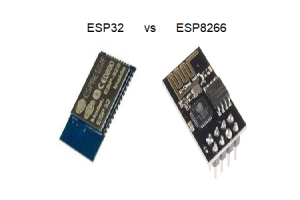
ESP32 or ESP8266: Which Microcontroller Best Fits Your Needs?
on October 8th
Popular Posts
-

What is GND in the circuit?
on January 1th 3109
-

RJ-45 Connector Guide: RJ-45 Connector Color Codes, Wiring Schemes, R-J45 Applications, RJ-45 Datasheets
on January 1th 2677
-

Understanding Power Supply Voltages in Electronics VCC, VDD, VEE, VSS, and GND
on November 15th 2214
-

Fiber Connector Types: SC Vs LC And LC Vs MTP
on January 1th 2183
-

Comparison Between DB9 and RS232
on January 1th 1802
-

What Is An LR44 Battery?
Electricity, that ubiquitous force, quietly permeates every aspect of our daily lives, from trivial gadgets to life-threatening medical equipment, it plays a silent role. However, truly grasping this energy, especially how to store and efficiently output it, is no easy task. It is against this background that this article will focus on a type of coin cell battery that may seem insignificant on the...on January 1th 1775
-

Understanding the Fundamentals:Inductance Resistance, andCapacitance
In the intricate dance of electrical engineering, a trio of fundamental elements takes center stage: inductance, resistance, and capacitance. Each bears unique traits that dictate the dynamic rhythms of electronic circuits. Here, we embark on a journey to decipher the complexities of these components, to uncover their distinct roles and practical uses within the vast electrical orchestra. Inductan...on January 1th 1729
-

CR2430 Battery Comprehensive Guide: Specifications, Applications and Comparison to CR2032 Batteries
What is CR2430 battery ?Benefits of CR2430 BatteriesNormCR2430 Battery ApplicationsCR2430 EquivalentCR2430 VS CR2032Battery CR2430 SizeWhat to look for when buying the CR2430 and equivalentsData Sheet PDFFrequently Asked Questions Batteries are the heart of small electronic devices. Among the many types available, coin cells play a crucial role, commonly found in calculators, remote controls, and ...on January 1th 1677
-

What Is RF and Why Do We Use It?
Radio Frequency (RF) technology is a key part of modern wireless communication, enabling data transmission over long distances without physical connections. This article delves into the basics of RF, explaining how electromagnetic radiation (EMR) makes RF communication possible. We will explore the principles of EMR, the creation and control of RF signals, and their wide-ranging uses. The article ...on January 1th 1670
-

Comprehensive guide to hFE in transistors
Transistors are crucial components in modern electronic devices, enabling signal amplification and control. This article delves into the knowledge surrounding hFE, including how to select a transistor's hFE value, how to find hFE, and the gain of different types of transistors. Through our exploration of hFE, we gain a deeper understanding of how transistors work and their role in electronic circu...on November 15th 1633

